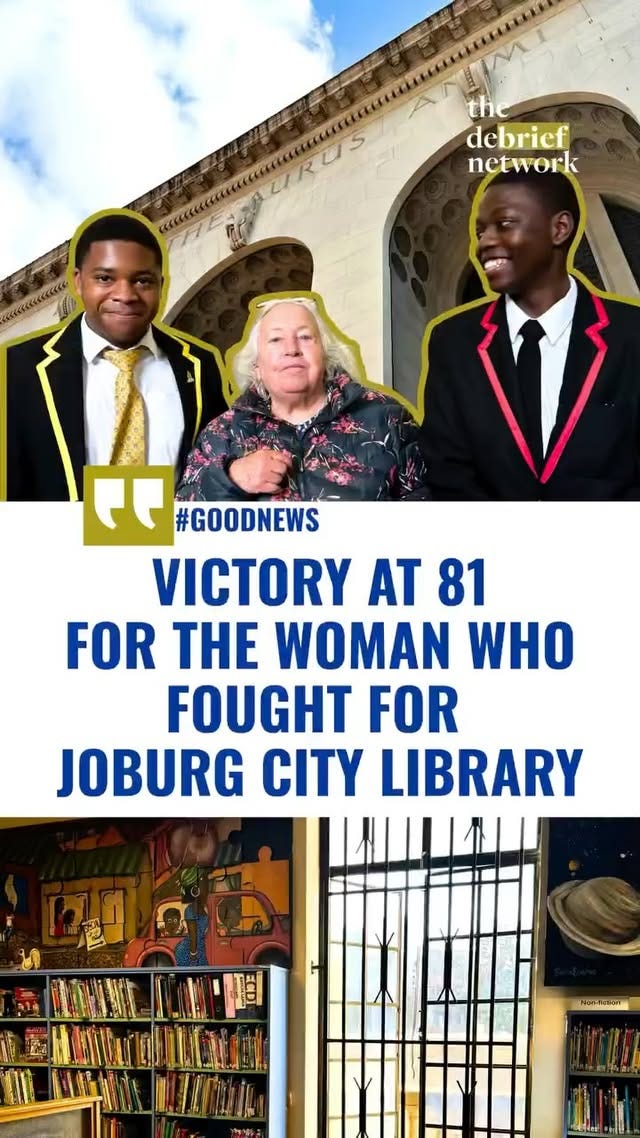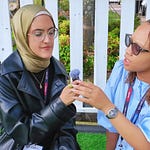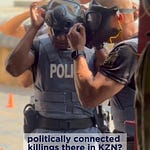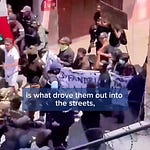In late August, as the weather began to warm up again, I made my way into the inner city of Johannesburg.
It was still early in the morning, but the city was already buzzing with the noise of taxis hooting, protesters chanting outside the Premier’s Office, and birds chirping filled the air.
In many ways, it was just another day in Joburg.
But I was there on a mission.
I was looking for the man behind the City of Johannesburg’s first-ever digital heritage register.
A project quietly revolutionising how we access and understand the city’s overlooked past.
Kopano Monaheng, the creator of the register, told The Debrief Network that to make the future better, we have to look at the past.
“The main reason why I had to create this register is because I saw the wealth of information that Joburg has, and it’s not exposed out there. I realised how much history influences our future, so my idea was to incorporate the past with the future, in order to create a better future. It is much easier now to buy a phone than to buy a book, so I saw that people are now looking for information in the digital space.”
After walking down Main Street, I finally found him, standing among a group of security trainees.
The first thing I asked was whether it was safe to interview him in that part of the city.
He laughed and reassured me that it was perfectly safe.
He explained that while Anglo-American had vacated the Mining District, they still maintained the area, thanks to his efforts to secure its upkeep the previous year.
Looking around, I was surprised by the quiet calm.
Locals were going about their day, tourists moved in small groups, and the trees had just begun to blossom.
As we walked through the Mining District, Monaheng showed me the Impala Stampede sculpture - a striking piece of public art gifted to the city in 1960 by Mr. Harry Oppenheimer.
Originally located behind the Rissik Street Post Office, the sculpture was vandalised and beheaded in 1999.
As he recounted the story, the surrounding fountain suddenly came to life, and the sculpture was transformed once again into a living, breathing artwork.
“Most of Joburg’s history is endangered and overlooked,” Monaheng said.
“Mainly in the inner city. That’s why you find so many hijacked buildings, sites in a state of decay, it’s been very much neglected. Especially after people and businesses moved out of Jozi, they left these buildings behind. But I think the danger goes deeper than just the physical structures, it’s in our culture too. The stories, the intangible heritage, it’s all endangered.”
The inner city has long drawn criticism for its neglect.
President Cyril Ramaphosa’s surprise visit in March brought it further into focus.
He called on Johannesburg Mayor Dada Morero to urgently clean up the city and even established a Presidential Working Group to prepare it ahead of the G20 Summit in November.
But when I asked Monaheng whether he’d seen any changes since the President’s visit, he chuckled and replied,
“The only thing I’ve seen is that the streets are now being cleaned.”
I asked what inspired him to create the heritage website.
He said it started with curiosity and the desire to understand his surroundings.
He began asking questions about the visible divides between communities in Johannesburg and kept digging until he uncovered the roots of it all.
As we take a quick walk to Chancellor House, we dart between cars to cross the road.
But then we turned the corner, and there he was: Nelson Mandela, immortalised in the Shadow Boxer sculpture, fists raised mid-spar.
Based on a photo by Bob Gosani, the artwork shows Madiba fighting for freedom.
The placement is poetic, the Magistrates' Court in front of him, and Chancellor House, the former law offices of Nelson Mandela and Oliver Tambo, behind him. Chancellor House was a rare law firm owned by Black South Africans in the 1950s, at a time when that was unheard of, and largely illegal. It is one of the many important heritage sites now documented on Monaheng’s digital platform.
For Monaheng, documenting the stories of the forgotten is central to his work.
“The people I strongly believe were left out in the history of Johannesburg are the natives who inhabited it initially, the people who were here before 1886. They built the foundation of Johannesburg.”
His mission is about inclusion, about ensuring those previously erased from history are now remembered and celebrated.
After walking for blocks through the city with him, it’s clear: Monaheng is not only filled with laughter and joy, but he is working to redress centuries of injustice, one heritage site at a time.
“I believe preserving heritage in the city of Johannesburg is an act of justice. Because an injustice was already done - my people were dismantled and removed from the city, even though they occupied it first.”
Equally important for him is accessibility. Heritage should be for everyone, not locked away in obscure archives or reserved for a privileged few.
“I need Johannesburg’s heritage to be explored by every single person living in South Africa, because South Africa is for all of us.”
For years, people have said Johannesburg is in decay. And maybe it is.
But people like Kopano Monaheng are showing us what it truly means to be a hero of Joburg.
Instead of complaining like the rest of us, he is doing the work, and in doing so, reminding us all of the power we have to create a better future for Johannesburg, and South Africa.













